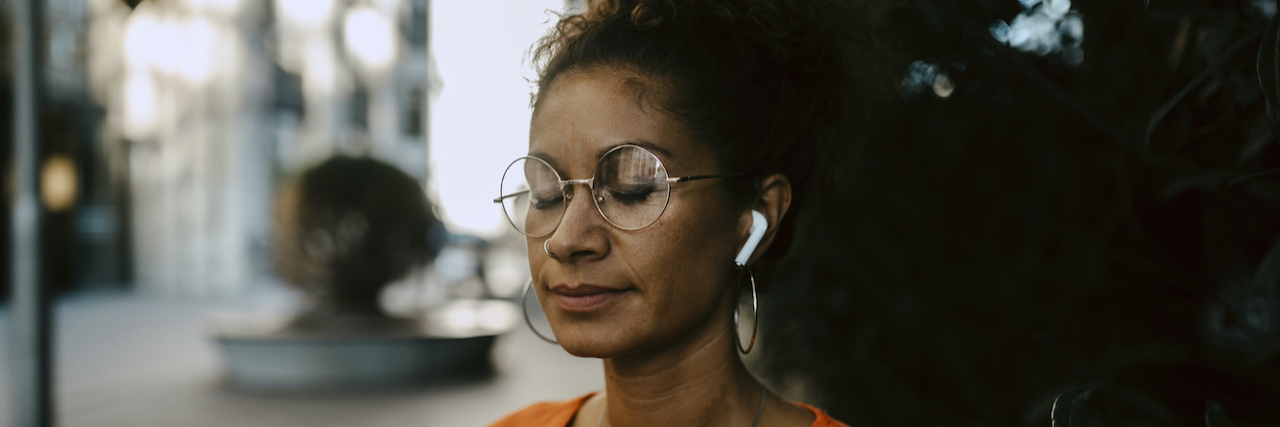In zombie movies it typically starts the same way — the character is acting completely natural one minute — then somehow either they are infected by an unlucky scratch or bite. Within minutes this individual is transformed from a rational human being into a terrifying monster.
This quick, frightening transition is how I think about my obsessive compulsive disorder (OCD) related anger outbursts. Ironically in one zombie movie (28 Days Later) the infection is actually called the “Rage” virus. That is exactly what it feels like when my “OCD Rage” takes over.
My spouse and I may be having a completely normal conversation and I will start to become irritated due to some OCD-related anxiety that continues to play in my head over and over like a song on repeat. As my mind continues to play out this distressing OCD scenario, my frustration mounts and my anger starts to rise much like I have been infected with some horrific virus. At a certain point — sometimes just minutes later — I feel that I have been overtaken by anger and the hurtful, vicious words that come hurling out of me seem like they are generated by some horror movie parasite overtaking my faculties and not my own will. It is exactly at this time, when I am not acting like the “true me” anymore, that I know I need to give myself a “time out.” I need to physically remove myself from the current situation to transition from movie monster back to human being again.
My go-to time out spot is typically my bedroom. I usually either sit or lay down on my bed. I use de-stimulation and relaxation practices including:
1. Turning off all the lights in my room
2. Turning on one relaxing focal light usually either
- my artificial fish tank
- my Himalayan salt lamp
- my alarm clock with transitioning colors
3. The most important activity I do at this time is participate in meditative breathing.
Meditation is a huge part of my obsessive-compulsive disorder coping tool kit. I participate in a simple meditative exercise where I count to 100 taking two deep breaths for every number. If I am still feeling agitated after the first set — I continue this practice until I start to both physiologically and mentally feel calm.
My alternate go-to time out is literally outside. If the weather permits — I will throw on my sweats, grab my headphones, and literally do laps around my driveway while I sing along to loud songs that eventually transition to more tranquil songs as I walk and sing off my anger and frustration.
It is interesting to me in either time out scenario how I start out enraged and irrational and slowly as I focus on breathing or walking and singing, my anger dissipates and my rational thinking returns. Within 30 minutes or less I am back to my normal self wondering how and why I became so angry in the first place.
Although giving yourself a time out after you have an emotional outburst is a good (and necessary) action — the real secret is to learn how to take that emotional break before you bring hurt and chaos into your relationships in the first place. It is a practice that I will continue to work on throughout my life. One very important thing that I have learned is that listening to your “internal cues” can help you reroute your interactions with your loved ones to avoid negative emotional consequences.
Some cues that I personally listen for are the following:
- Have I been feeling irritated throughout the day
- Am I struggling with a particular OCD thought that I cannot “shake”
- Am I starting to feel my internal body temperature rising
- Am I having angry thoughts directed at this person for no valid reason
- Do I feel my level of anger and frustration at my OCD rising
- Has OCD caused me to struggle with tasks all day leading to increasing frustration
If I recognize these internal warning cues emerging, I know it is a good idea to take a time out before I initiate a hostile interaction.
I have used my own personal emotional triggers and time outs as examples; however, each individual must reflect to determine his or her own triggers and what places and techniques can be used to as calming time outs.
Through practicing these techniques, I have learned that although I can grant obsessive-compulsive disorder the power to transform me into an emotional “movie monster,” it is also true that I have the tools to reverse the transformation and become my true, loving self again.
Getty image by Maskot

